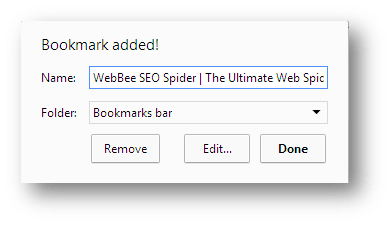Almost half of the fate of your web page is decided on the Search Engine Result Pages (SERPs). It is there that the user decides whether or not they will benefit from your content. Those few words that appear in the search results, known as webpage title, are all you’ve got to make your first (and last) impression.
And the worst part is? Millions of web pages don’t even appear in the search results because their owners don’t know how to play the game. They lack the knowledge of SEO titles.
But, don’t worry! You don’t have to be another small fish in the pond.
You can boost your search engine rankings and click-through rates today, with a few simple title tag optimization techniques that the SEO experts have developed through years of testing.
Read on and you’ll find SEO title best practices that will help you to get users to your website and convert them into customers, right from the Search Engine Result Pages.
Understanding What is a Title Tag and Why is it Important
Those phrases that represent your web page in the SERPs are called “Title tags” or technically, “Title elements”. See the image below.
[the_ad id=”6392″]
SEO Titles are very much responsible for helping you to not only climb up the search engine ranks, but also to convince your potential visitors of your relevance to their query.
Precisely, a title tag is one of the most important on-page factors that affect the search engine rankings of your page. It is literally the title of your web page, as it tells users and search engines about the contents of your page.
Where to Find Title Tag on Webpage?
Your title tag appears between <title></title> in the HTML of your webpage.
While it appears nowhere ON the webpage, it DOES appear on the top of the open tab in many browsers. It also makes an appearance whenever your page is bookmarked or shared on social media.
Therefore, your title tag is evidently the first interaction your user has with your web page.
Taking some time to craft it carefully is probably the wisest investment you can make for a terrific, low-hanging SEO fruit.
How to Write an Irresistible Title Tag
There are no rules written in stone for writing the best title tag, but there certainly are some best practices which have evolved since the emergence of search engines.
Here are some tips you should consider while writing a title tag:
[the_ad id=”6394″]
Keep it the optimal length
The optimal length for a title tag is usually 50-60 characters including spaces, or generally anything that fits into a 512 pixels display. Characters exceeding this limit are truncated by Google and are displayed as ellipsis (…).
Place your most important keyword first
You should place your most important keywords first in your title tag, while the least important last. This makes your relevance easy to be understood by search engines.
Integrate your keywords naturally
NEVER “stuff” your title tags with keywords, or repeat the same word over and over. You may be tempted to think that it will increase your relevance, but on the flip side, this can entitle your content as “spammy” and cause you to lose your rankings all at once.
Rule of Thumb: Write a title tag that looks descriptive, and not like a list of keywords.
Use pipes “|” or commas “,” to separate keywords
No other punctuation should be used unless your keyword is written in that way.
Write it for humans, optimize it for search engines
While your title tag should be SEO friendly, you should never forget the fact that it is your visitors who are going to buy, read or do whatever is your intended response. They are human beings with emotions. A keyword stuffed spam is only going to repel them.
Therefore, take your time to craft a compelling title tag that not only provides search engines the useful information, but also gives the readers the gist of your content.
Make it relevant
Write a title tag that clearly describes the contents of your webpage.
Write a unique title tag for every web page
Never duplicate your title tags. Every page should have its own unique title tag that is relevant to its contents.
BOOM! Your SEO optimized title is ready.
Sometimes Google may replace your title tag with one that it finds more relevant with the search query. While there is no assurance that yours won’t be replaced, you should always write one that is relevant, descriptive and serves its purpose for both, humans and search engines.
[the_ad id=”6395″]
Lastly, there are times when you may think that you’ve written an excellent title tag. But if the search engines or customers don’t respond well to it, go back to the start and craft a new one.
Previous Article
Keywords for Websites
Articles that May Interest You |
|
|---|---|



